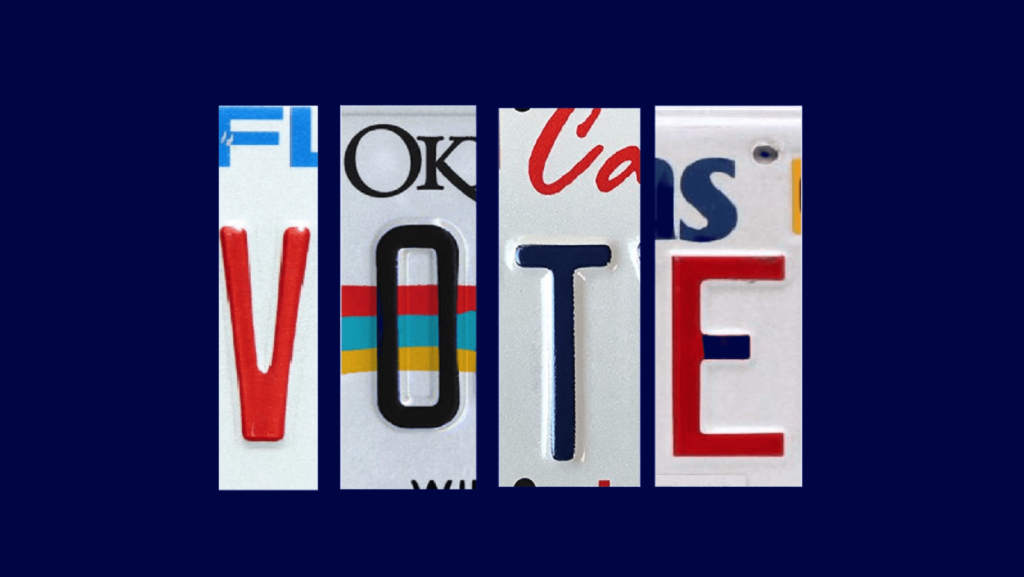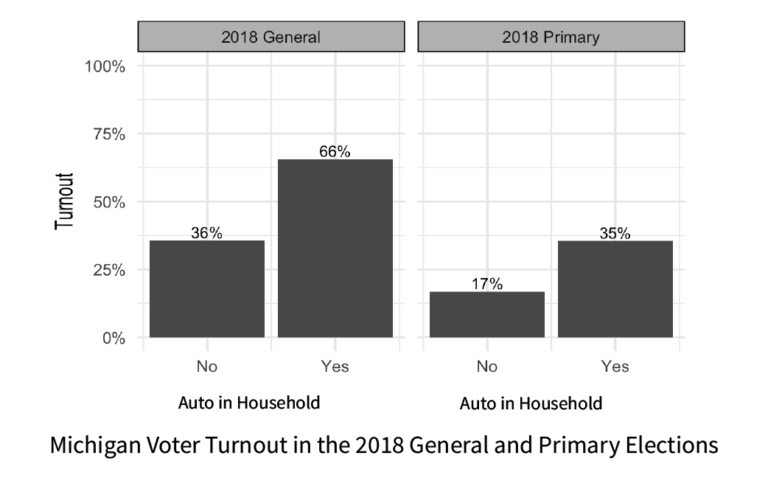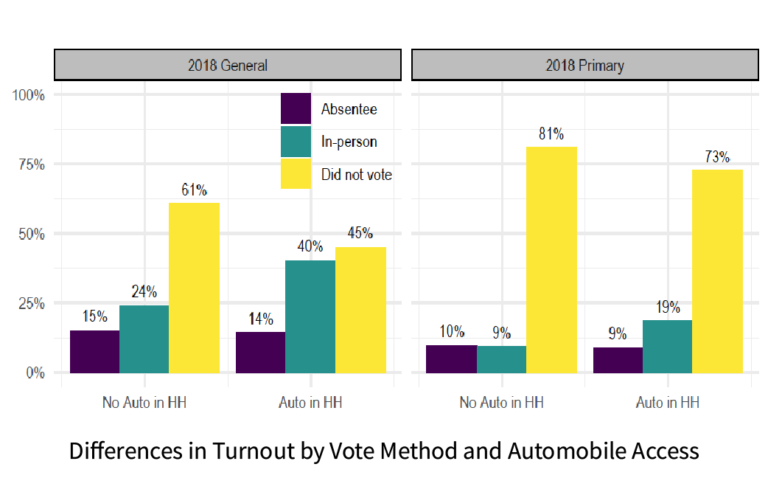Got Wheels? How Having Access to a Car Impacts Voting

Disparities in voter turnout are concerning for democratic representation. If the preferences of those who vote are different from those who did not vote, then elected officials may not represent the full set of citizens. Removing barriers to electoral participation improves representation by ensuring that all citizens who want to vote are able to do so.
One major barrier to voting is getting to the polls. While absentee voting is an option (with varying requirements) for voters in many states, the majority of voters in most states continue to cast their ballots in person. If voters face impediments in getting to their polling place, such as a lack of transportation, they may be less likely to vote and participate in the democratic process.
Voters who lack automobile access or reliable and fast public transportation face a significant barrier to in-person voting, compared to those with ready access to transportation.
To better understand the importance of transportation on in-person voting, we used administrative data from Michigan to study the effects of car ownership on voter turnout. We linked the Michigan voter file (list of all registered voters) and data on drivers’ licenses and automobile registrations to examine individuals’ voting participation rates. We find that lack of access to a car hinders people from turning out to vote in person in both general and primary elections. Overall, 66% of voters with access to a car voted in the 2018 general election, compared to only 36% who did not, a 30 percentage point gap.

Our examination goes further than just showing disparities in turnout between people with and without a car. We demonstrate how this is a causal effect: access to a car creates disparities in turnout even holding constant other demographic characteristics of voters. We also compare voting rates for people with and without a car who live within the same apartment building as other registered voters. These comparisons all lead to the same answer: when voters do not have access to a car, they vote at lower rates.
We also use Google Maps travel routing to see how the effect of car access depends on the time it would take to get to the polls. For most voters, walking or using public transit to get to the polls is far slower than driving. While lacking access to a car reduces turnout for all voters, regardless of their distance from their polling place, we find that the effect of car access is larger when travel time without a car is longer. The further one lives from the polls, the greater the effect of car ownership on turnout.
Transportation is less of a hurdle for voting when absentee ballots are widely available. We also examined the effect of access to a car on turnout by vote method. We find that car access has no effect on the rate of voting by mail; people with and without a car vote by mail at very similar rates, despite the large differences in turnout on election day.

Overall, our research highlights a critical barrier to voting and a simple policy solution to close gaps in political participation. Voters who lack automobile access or reliable and fast public transportation face a significant barrier to in-person voting, compared to those with ready access to transportation. Mail voting has the power to reduce participatory inequalities that result from transportation access. Policymakers seeking to reduce voting inequalities and broaden the electoral franchise should pursue this simple solution. Doing so has the power to decouple democratic participation from access to a personal automobile and improve representation.
Read the full research article here.
Justin de Benedictis-Kessner is an Assistant Professor of Public Policy at Harvard University. His research addresses accountability, representation, local politics and public opinion.
Maxwell Palmer is an Assistant Professor of Political Science at Boston University. He studies Congress, electoral institutions and local politics, with a focus on how institutions and rules impact representation and policy outcomes.